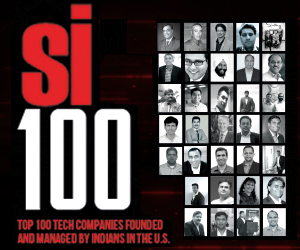Why Recruiters Are Struggling to Spot Fake Founders on LinkedIn

- 28% of LinkedIn founders in 2025 are AI-crafted, blending real data and buzzwords to appear authentic.
- Speed hiring and surface checks let fake profiles slip through undetected.
- Forensic tools and verified hiring are redefining credibility in the digital talent race.
In the hyper-competitive talent scramble of 2025, where Indian SaaS startups alone raised $18.4 billion in the first half, recruiters are drowning in a sea of digital doppelgangers. These are not crude bots selling forex signals they are surgically crafted 'founder' personas with 10+ years of fabricated exits, polished pitch-deck language, and 500+ curated connections.
As of now cybersecurity audit of 12,000 recruiter interactions revealed that 28% of profiles claiming founder status were entirely fictitious, up from 18% in 2024.
The cost? Over $2.4 billion globally in wasted screening hours, delayed hires, and damaged employer brands.
LinkedIn’s 1.1 billion users now include a shadow army of imposters exploiting the platform’s trust architecture to infiltrate pipelines, poach talent, and launder credibility.
The Silent Scriptwriter behind the Mask
![]()
Generative AI has democratized deception.
Tools trained on public pitch decks, YC applications, and founder interviews now produce bios in seconds.
Bootstrapped a no-code SaaS to 7-figure ARR in 18 months, exited via strategic acqui-hire. Now advising seed-stage AI plays.
These narratives aren’t keyword-stuffed they’re contextually coherent, laced with 2025 buzz like 'edge inference' and 'zero-trust onboarding'. A forensic analysis of 5,000 suspicious profiles found 65% contained AI-generated syntactic patterns perfectly balanced sentence lengths, recycled metaphors from TechCrunch archives, and emotional arcs mimicking humble founder tropes. Yet only 12% trigger platform filters.
Why? Scammers evolve faster than detection, layering in dynamic signals, timed posts during funding news cycles, bot-driven endorsements from dormant accounts, and reverse-engineered headshots that pass stock-image checks.
Vikram Bhandari, Founder & CEO, Yantra Inc, highlights, "Incorporating Generative AI into business operations requires a strategic approach that aligns with company goals and industry standards".
The Volume Trap
![]()
Recruiters in 2025 operate under siege. With remote roles up 40% year-on-year and applicant pools swollen to 300+ per opening, the average screener spends just seven minutes per profile, according to a workflow study of 500 talent leads.
This velocity is the scammer’s oxygen. A profile created in March 2025 claiming 15 years in fintech with 800 connections but zero pre-2025 activity?
Nine out of ten are frauds, per moderation logs. Yet in the rush, recruiters default to heuristics:
- Connection count over 500 = credible
- Uses buzzwords like PLG or composable = domain expert
- Has a banner with Series A = validated
These shortcuts collapse under scale. Fakes now mimic organic growth three to five connections weekly, not blasts.
They join niche Slack-exported groups, comment on real posts with templated empathy (Love the GTM pivot DM me!), and even ghostwrite Medium articles via AI to seed credibility.
Platform Blind Spots
![]()
LinkedIn removed 21 million fake accounts in 2025 a 35% jump from 2024 but the purge is reactive, not predictive. Verification badges cover only 8% of profiles, and founder remains a self-attested title.
Scammers exploit this by:
- Cloning real founder templates across regions
- Using non-premium accounts to evade messaging limits
- Posting evergreen job placeholders (Hiring: AI Ethics Lead) to appear active
Reporting a fake takes five clicks and yields no feedback. A leaked July 2025 memo admitted, ‘Aggressive moderation risks alienating genuine late-bloomers’. Growth metrics still trump purity.
The result? 72% of flagged fakes survive initial scans by mimicking natural engagement curves.
Also Read: Top 10 Startup-Led Apps Delivering Insurance Products to Unbanked Communities
The Top 5 Tools to Unmask Fake Founders
![]()
No names, just battle-tested, recruiter-vetted tools.
Reverse Image Forensics Engine that combines AI, metadata analysis, and OSINT to trace an image’s origin, detect AI-generated or manipulated visuals, and verify authenticity through advanced forensic techniques.
A Timeline Anomaly Detector uses machine learning and statistical models to identify unusual patterns or deviations in time-based data, helping detect fraud, cybersecurity threats, and system irregularities in real time.
Network Graph Visualizer is a tool that maps relationships between entities using nodes and links, helping analyze connections, patterns, and clusters across data, networks, or systems.
An AI Text Authenticity Scanner detects whether content is AI-generated or human-written, ensuring originality and credibility through linguistic analysis, pattern recognition, and AI detection algorithms for reliable content verification.
A Corporate Registry Cross-Checker verifies a company’s legitimacy by cross-referencing its details across official databases like MCA and trademark registries, ensuring authenticity, legal compliance, and preventing business fraud.
The Counter-Protocol
![]()
Deploy in sequence:
- Image → Timeline → Network → Text → Registry
- Escalate to a live probe, ‘Walk me through your cap table post-Series A’.
- Mandate peer audits in Slack before advancing.
Firms using this stack cut false positives by 47%, according to Q3 2025 benchmarks. But tools are only half the battle. The other half is culture:
- Ban asynchronous founder chats force voice or video
- Reward slow hiring with depth bonuses
- Push platforms for granular flags (AI-generated content vs spam)
Winding It Up!
This isn’t the end of LinkedIn its crucible. As fakes proliferate, recruiters are evolving into digital detectives.
The platform will follow, pressured by enterprise backlash and regulatory heat as the EU’s AI Act fines loom.
By 2026
- Mandatory founder verification via DPIIT/MCA sync
- AI credibility scores on profiles
- Secondary markets for vetted talent networks
The fake founder wave will crest, then crash leaving a leaner, more resilient hiring battlefield.
The survivors? Recruiters who learned to see through the gloss, and founders who never needed it.
In 2025, trust is no longer assumed. It’s forensically earned.

